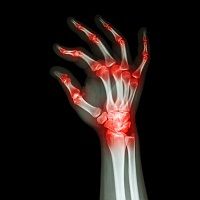Phase 2 Data Show Promise for JAK1 Inhibitor ABT-494
In phase 2 data, ABT-494 showed a significant dose response over placebo in treating rheumatoid arthritis.

In phase 2 data, ABT-494 showed a significant dose response over placebo in treating rheumatoid arthritis (RA). The data was announced in a poster presentation at the 2015 American College of Rheumatology Annual Meeting being held this week in San Francisco.
ABT-494 is a novel selective Janus Kinase 1 (JAK1) inhibitor-- a family of enzymes implicated as drug targets in inflammatory diseases and some types of cancer. The result of this and another phase 2 study convinced manufacturer AbbVie to hand back its rights to another JAK inhibitor license from a different manufacturer and exclusively pursue ABT-494 earlier this year.
The current study was a phase 2b, 12-week, double-blind, placebo-controlled study of 276 patients who were resistant to previous anti-TNF therapy. Patients receiving stable background methotrexate (MTX) were randomized 1:1:1:1:1 to ABT-494 at 3 mg, 6 mg, 12 mg, and 18 mg twice daily or matching placebo. All 276 patients had failed one or more anti-TNF therapy prior to enrollment; 28% had received ≥2 anti-TNF biologics and 20% had also received non—anti-TNF biologics. Baseline characteristics were similar in all treatment groups. The proportion of patients achieving ACR20 at week 12 was significantly higher for all ABT-494 groups versus placebo.
ACR50 and ACR70 responses were statistically significantly higher at doses of ≥6 mg twice daily. Changes in Disease Activity Score 28 (DAS28) from baseline were significantly greater for all doses of ABT-494 versus placebo. Onset of action was rapid, with significant differences in ACR20 and change in DAS28 (CRP) from baseline at week 2 (P≤0.007) for 6, 12, and 18 mg twice daily versus placebo. Low disease activity and clinical remission per DAS28 (CRP) criteria were achieved statistically significantly more often in the 12-mg BID dose group versus placebo.
Adverse event incidences were numerically higher in ABT-494 dose groups, with some trend towards dose dependency. The majority of infections were mild.
There was one serious infection in the placebo group; none were reported in the ABT-494 treatment groups. Five patients had non-serious events of herpes zoster: 1 patient each in the ABT-494 3 mg, 12 mg, and 18 mg treatment groups, and 2 patients in the placebo group. One patient in the 6-mg BID dose group reported 2 events of non-melanoma skin cancer (basal cell and squamous cell carcinomas).There was 1 report of anemia in the 18-mg BID dose group. No deaths were reported during the study.